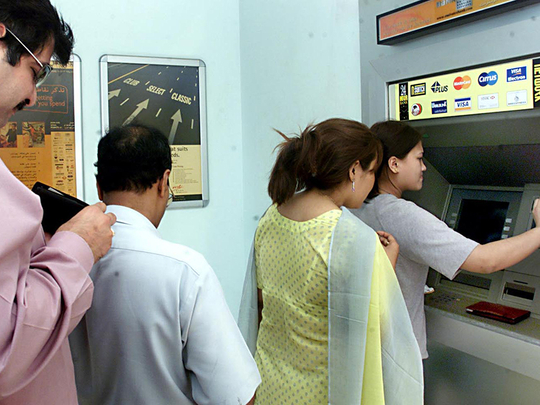
Dubai: A number of UAE banks are expected to report decline in profit growth in the third quarter of this year, despite a slowdown in loan skips by small and medium enterprises (SMEs) and retail borrowers compared to the previous four quarters.
As banks prepare to announce their third quarter results starting this week, bankers and analyst expect the non-performing loans (NPLs) and bad loan provisions to linger for a few more quarters, adversely impacting the overall profitability of banks.
The loan defaults from the small and medium enterprises portfolios that began in the second quarter of last year had resulted in a spike in NPLs, impacting the overall profitability of the banking sector.
Bankers say the skips have peaked in the first quarter of this year, but the impact of loan impairments could linger on for a few more quarters and could be reflected in the bank results as provisions are set to climb further.
“The skips caused the bulk of the loan losses last year. They started to climb from the middle of last year and peaked in the first quarter of this year. Definitely in last 3-4 months there has been a sharp decline in skips and we expect it to improve further,” said Subroto Som, Head of Retail Banking Group at Mashreq told Gulf News in a recent interview.
Rating agencies such as Standard & Poor’s and Moody expect to see a gradual climb in non-performing loans this year. In addition to higher impairments and increased cost of funding and slowing credit growth on a year on year basis are also likely to have exerted pressure on bank profits.
According to the latest UAE Central Bank data, total banking sector deposits fell for a third consecutive month in August, by 0.5 per cent month on month. This resulted in the yearly rate of deposit growth moderating to 3.3 per cent year on year, down from a recent high of 4.1 per cent in May. A drop in deposits from government related entities (GRE) by 4.1 per cent month on month was partly behind the system-wide fall.
“We believe that GREs have had to become more reliant on their own funds to meet spending requirements as a result of the lower oil price. GRE deposits were down 9.3 per cent year on year and down 17.4 per cent up to August,” said Monica Malik, Chief Economist of Abu Dhabi Commercial Bank.
Non-resident deposits of banking sector fell by 1.6 per cent month on month in August for a third consecutive month. To a great extent the risk to non-resident deposits comes from higher market interest rates in other GCC countries, which are facing tighter liquidity conditions. An increase in the cost of the liquidity, with banks having to source funding outside their home markets at wider spreads are expected to hurt profitability.
Credit growth
August data indicates a marginal improvement in credit growth from a month on month decline in August. The July fall was largely attributed to seasonal factors such as the end of Ramadan and Eid. However analysts say the slowdown in economic activity continues to be reflected in a moderation in yearly credit growth.
Deleveraging in the SME sector combined with job losses arising from restructurings have resulted in a year on year slowdown in credit growth. Private sector credit growth slowed to 6.9 per cent year on year in August, down from 8.5 per cent in December 2015. Within the private sector, personal credit growth has decelerated to 5.5 per cent year on year in August from 10.3 per cent in December 2015.
“We believe that job cuts and greater uncertainty over jobs and wages are behind this softening. Job losses became more evident over the summer months, as many people waited to see out the end of the school year before leaving the country,” said Malik.
Despite credit quality concerns linked to economic slowdown, corporate credit growth has remained broadly steady in August at 7.7 per cent compared to 7.6 per cent in December 2015. The loan-to-deposit ratio rose to 104.7 per cent in August, from 103.6 per cent in July and 100.9 per cent in December 2015. With the banking sector liquidity remaining tight and interbank rates on the upward trajectory, banks are expected to face pressure on margins.












